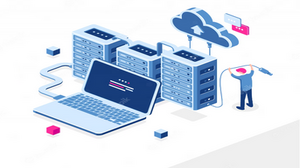Since the 1980s, there’s been a rule that three major competitors don’t last long in a technology market. For Google to stay relevant and remain in contention, it has to keep innovating and changing the rules.

Google Cloud (also known as Google Cloud Platform or GCP) is a provider of computing resources for developing, deploying, and operating applications on the Web. Although its cloud infrastructure does serve as the host for applications such as Google Workplace (formerly G Suite, and before that Google Apps), GCP is mainly a service for building and maintaining original applications, which may then be published via the Web from its hyperscale data center facilities.
Google Cloud
When you run a Web site, an application, or a service on GCP, Google keeps track of all of the resources it uses — specifically, how much processing power, data storage, database queries, and network connectivity it consumes. Rather than lease a server or a DNS address by the month (which is what you would do with an ordinary Web site provider), you pay for each of these resources on a per-minute or even per-second basis, with discounts that apply when your services are used heavily by your customers on the Web.

From the perspective of corporate parent Alphabet, GCP is a separate business unit, addressing the business need for enterprises and, in some cases, individuals to deploy software that is usable via Web browsers or through Web apps. GCP leases software, along with the resources needed to support that software and the tools with which such software is developed, on a pay-as-you-go basis.

